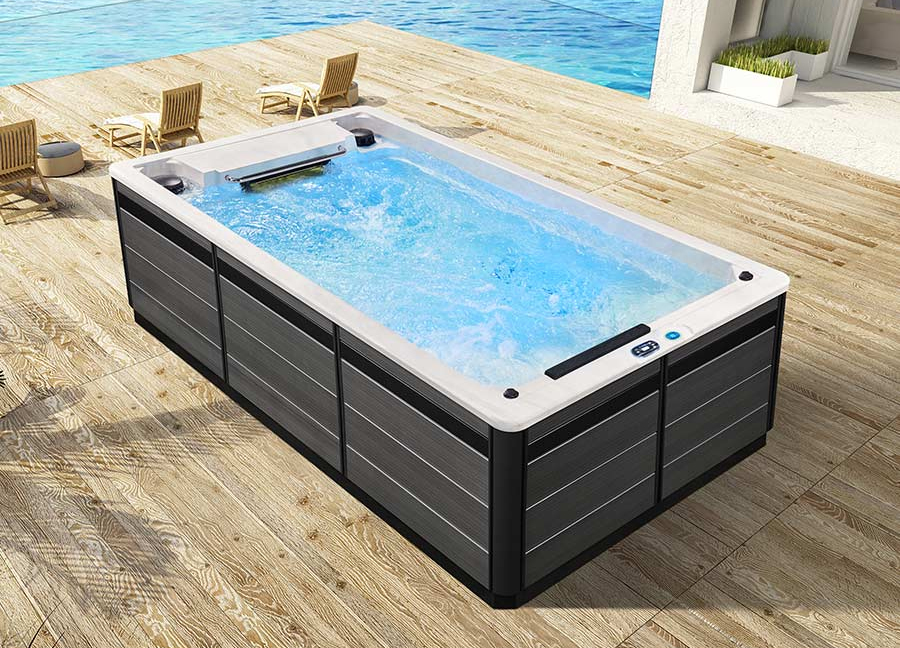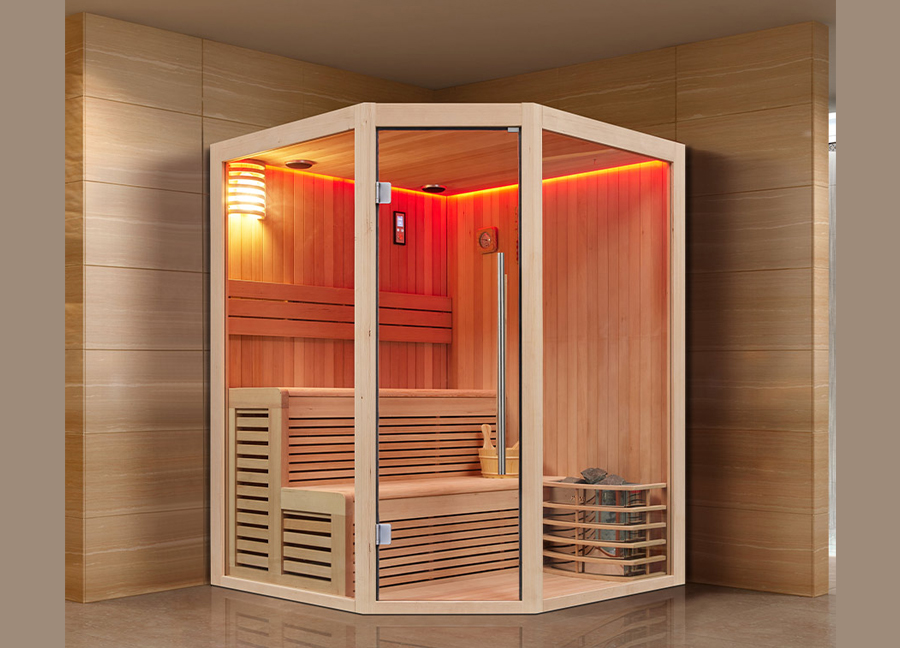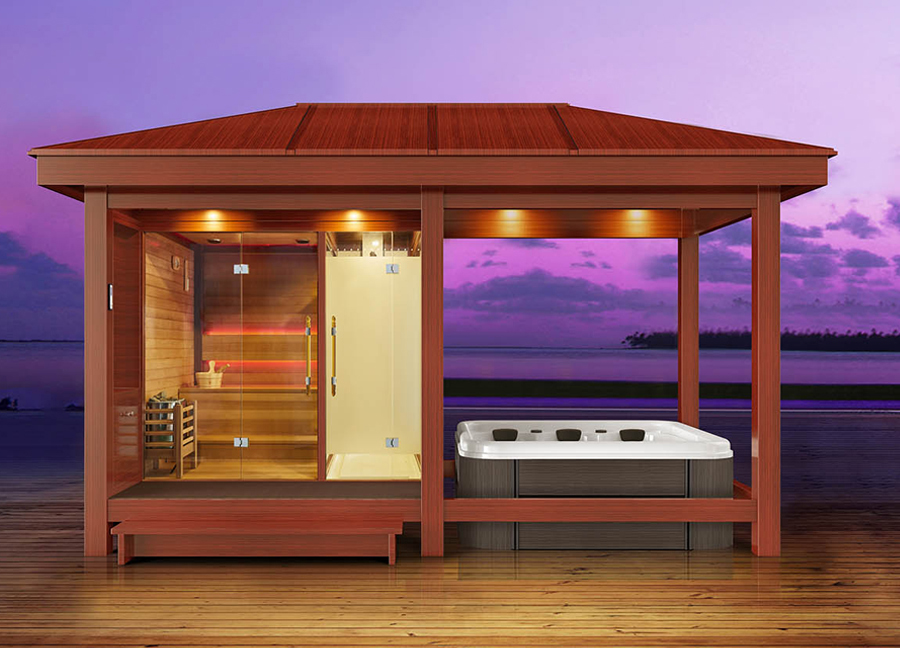—Why do I urinate so often after using a steam sauna?
Many people share a common experience after using a steam sauna: frequent urination shortly after leaving the sauna. Some even find that they still urinate a large amount even after sweating profusely.
This seemingly contradictory phenomenon raises many questions: Why does the body urinate frequently under conditions of high temperature, high humidity, and significant sweating? Is this a normal physiological response, or a signal of some potential health problem?
This article will analyze this phenomenon from multiple perspectives, aiming to help readers truly understand "why do I urinate so much after using a sauna" from a professional standpoint and provide health guidance.
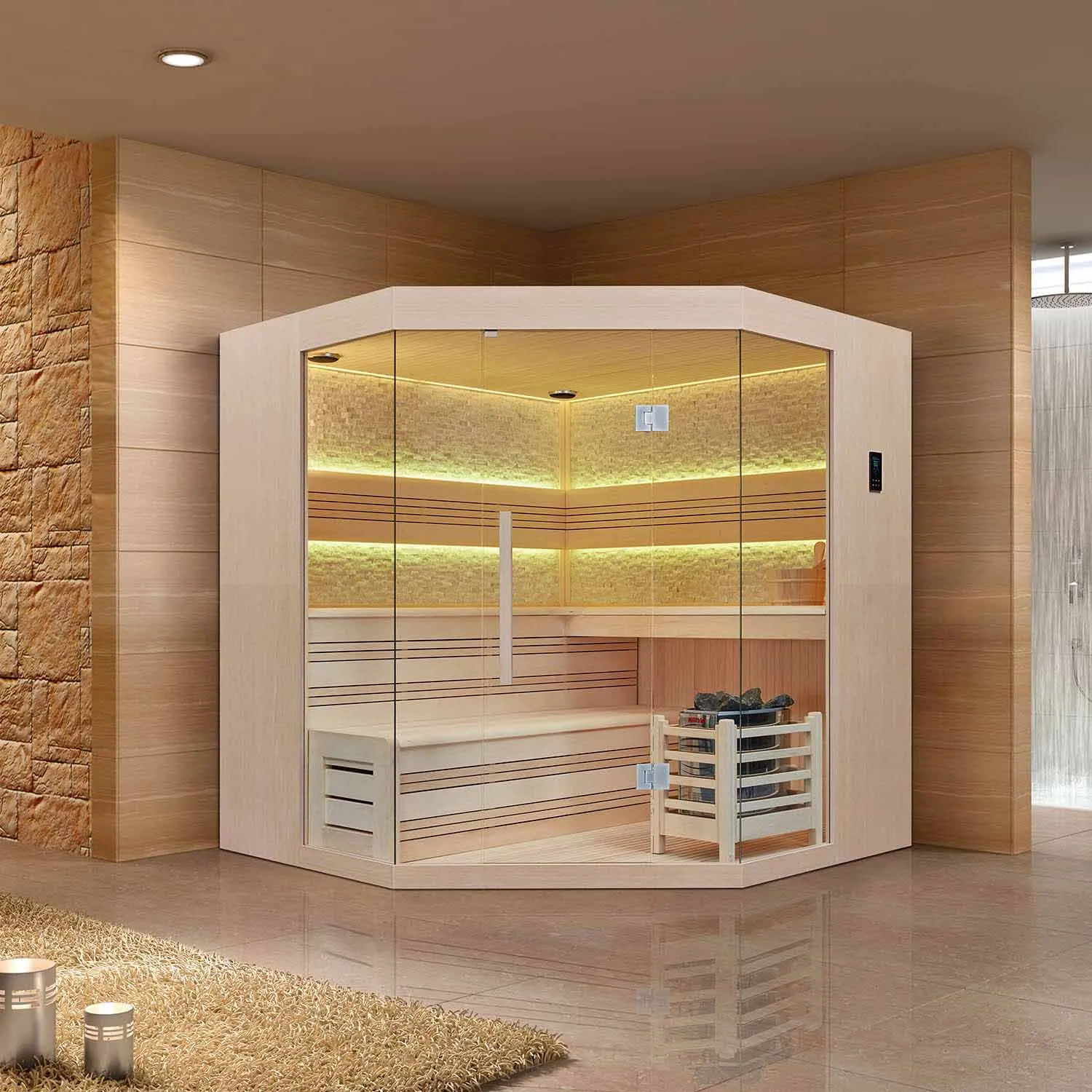
Environmental Characteristics and Bodily Reactions of a Steam Sauna Room
1. Working Principle of a Steam Sauna Room
A steam sauna room is a thermotherapy device that uses a steam generator to rapidly heat water, creating a high-temperature, high-humidity environment within a closed space. Its typical characteristics are:
· Temperature is generally between 40℃ and 50℃;
· Humidity is over 90%;
· Usage time is generally 10-20 minutes;
· Usually used for relaxation, sweating, and improving blood circulation and skin metabolism.
2. Typical bodily responses to a steam sauna environment
In a steam sauna room, the human body undergoes the following physiological changes:
· Increased sweating: the primary mechanism for regulating body temperature;
· Vasodilation: especially in peripheral blood vessels of the skin, promoting heat dissipation;
· Increased heart rate: to maintain core blood flow;
· Redistribution of body fluids: water migrates from inside and outside cells to sweat glands and the circulatory system;
· Changes in urine output: some people experience a significant increase in urination after use.
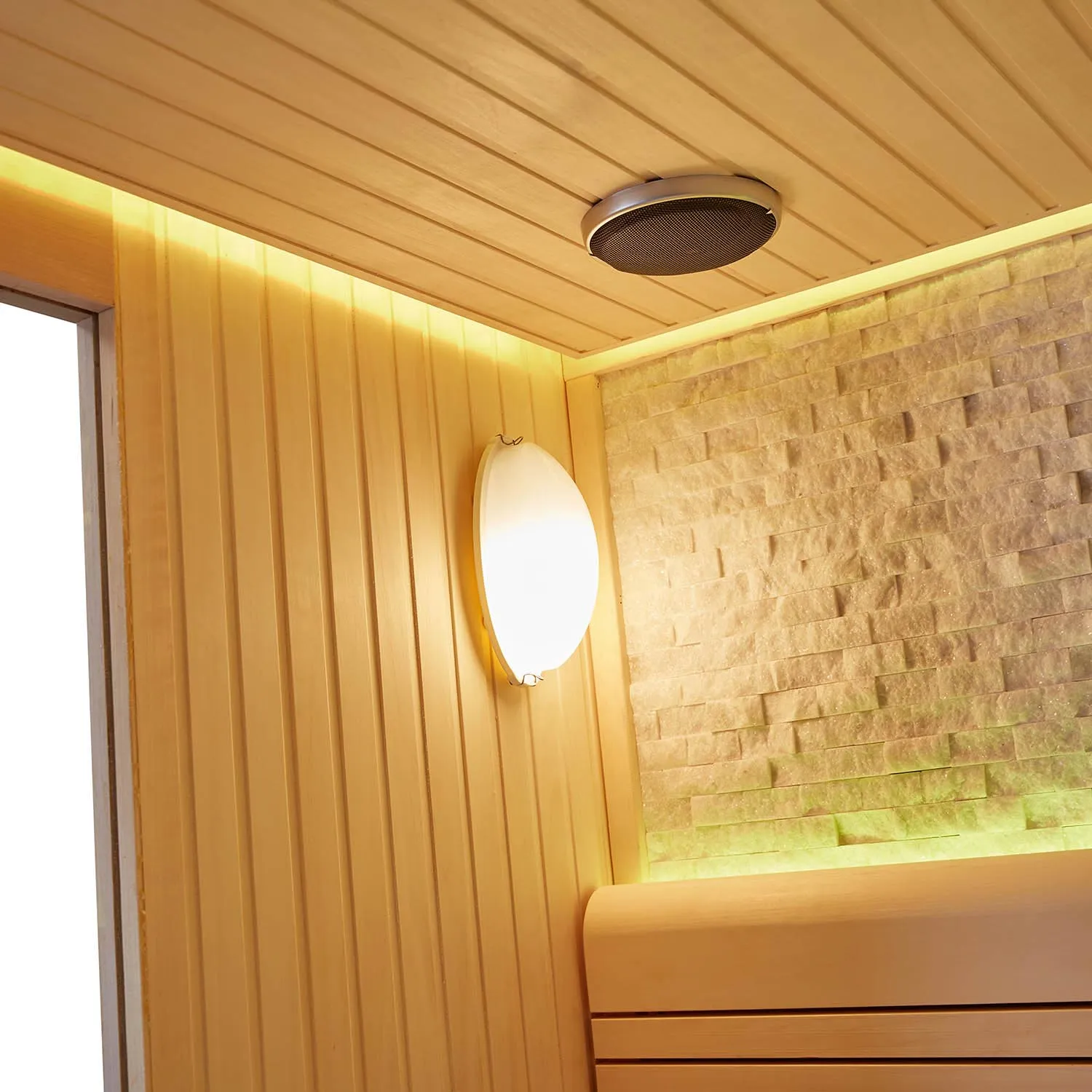
Why does urination increase after using a steam sauna room? —Professional Analysis
The following will analyze the five core reasons for this phenomenon from the perspective of human physiological mechanisms.
1. Sweating Promotes Reduced Antidiuretic Hormone (ADH) Secretion
Antidiuretic hormone (ADH), produced by the hypothalamus, primarily acts on the renal tubules and collecting ducts, causing them to reabsorb more water, thus reducing urine output.
However, in the high temperature and humidity environment of a steam sauna, increased body temperature and external stimuli temporarily inhibit ADH secretion. The results are:
· Reduced water reabsorption by the kidneys;
· Increased urine output;
· Continued urination even when the body is sweating.
This is a core endocrine mechanism of frequent urination.
2. Changes in Plasma Osmolarity and Renal Filtration Response
During a steam sauna, a large amount of water is lost through sweat, but this is usually accompanied by water intake (drinking). At this time, the body's water-electrolyte balance and plasma osmolarity change as follows:
· Excessive water intake → plasma dilution → decreased osmolarity;
· The kidneys sense the dilution → increase filtration → accelerate water excretion;
· Ultimately, this manifests as increased urine output and lighter urine color.
Therefore, if you drink a lot of water while using a steam sauna, frequent urination afterward is a normal regulatory phenomenon.
3. Sympathetic Inhibition and Enhanced Bladder Emptying Reflex under High Temperatures
The steam sauna environment inhibits the sympathetic nervous system and promotes parasympathetic excitation. This change in the autonomic nervous system has the following effects on the bladder:
· The detrusor muscle of the bladder is controlled by the parasympathetic nervous system;
· The steam environment induces detrusor muscle excitation → enhanced urination reflex;
· At the same time, sphincter tone decreases, making it easier to feel the urge to urinate.
This explains why some people experience a "urgency to urinate" immediately during or after a sauna.
4. Thermal Expansion and Contraction and Peripheral Circulation Redistribution
High temperatures cause vasodilation in the body, especially in the peripheral blood vessels of the skin, thereby promoting blood flow redistribution. The results include:
· Blood flow shifts from the heart to the skin;
· Some water enters the bloodstream and is processed by the kidneys;
· As the sauna ends and the body cools down, blood flow returns → the kidneys re-filter excess water → increased urination.
This process is usually noticeable 10-30 minutes after a sauna session.
5. Mental Relaxation and Increased Urinary System Sensitivity
Many people who use steam saunas report feeling extremely relaxed during the process. In this state, the body is more sensitive to "visceral sensations":
· Even if the bladder is not severely full, the urge to urinate is more likely to occur;
· In a relaxed state, the bladder sphincter tone decreases, also accelerating the formation of the urge to urinate;
· The overall manifestation is "not having held it for long, but suddenly experiencing a strong urge to urinate."
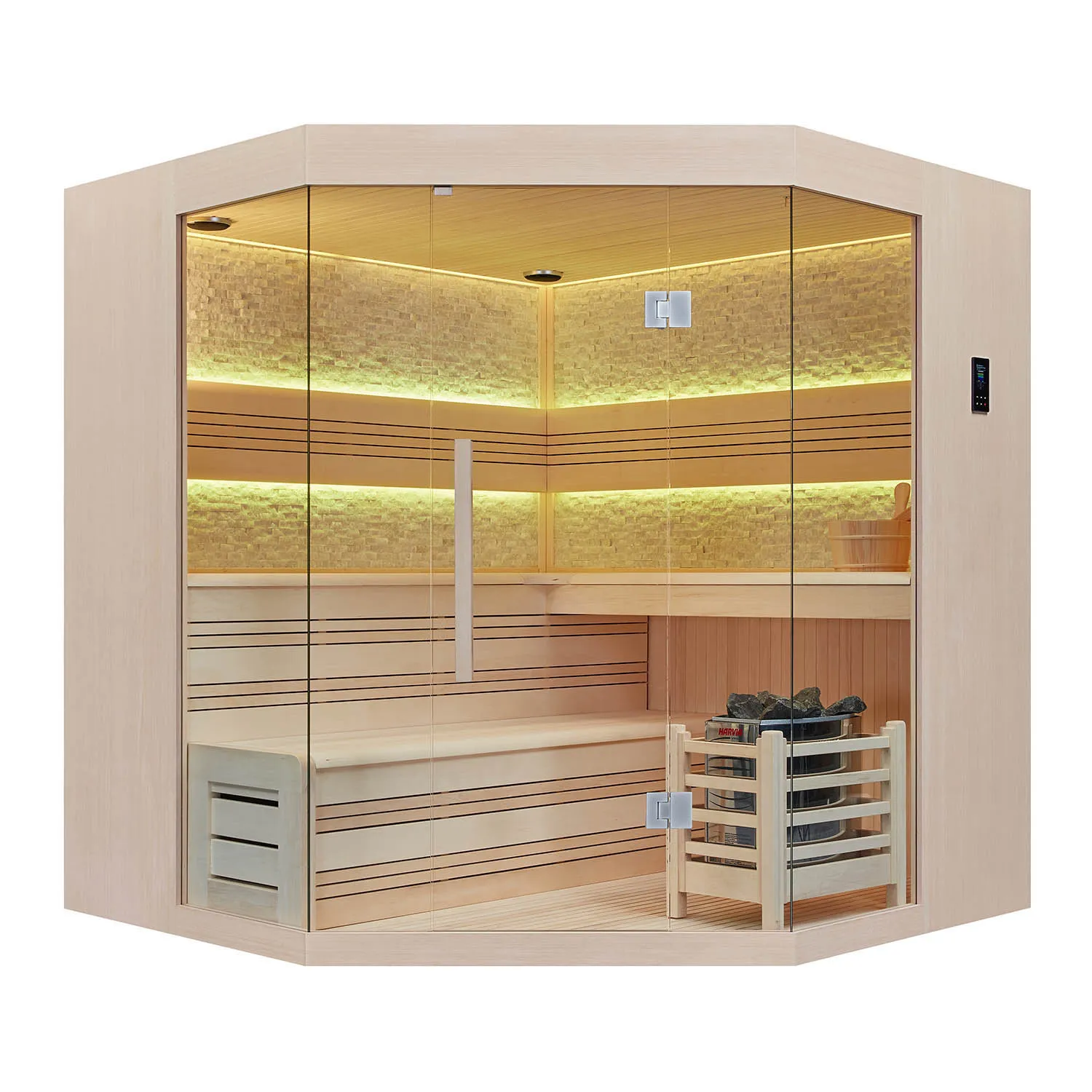
What situations are normal for increased urination? What situations require attention?
While increased urination is a normal reaction for most people after a steam sauna, there are some special situations that require attention.
1. Normal Situations
· Sauna time should be controlled within 20 minutes;
· Drinking appropriate amounts of water during the process (200-400ml);
· Urine is light yellow, without stinging or odor;
· No symptoms of dehydration or electrolyte imbalance such as dizziness, weakness, or palpitations.
Increased urination at this time is usually a natural manifestation of the body's fluid regulation mechanism.
2. Abnormal or Alarming Situations
Abnormal symptoms | Possible causes | Suggested treatment |
| Dark and scanty urine, accompanied by dizziness and thirst | Mild dehydration | Drink plenty of water and stop using the sauna |
| Severe urinary frequency, exceeding 6 times/hour | Urinary tract irritation, bladder hypersensitivity | Stop using the sauna and observe your urine |
| Cloudy urine, foamy, or bloody | Abnormal kidney metabolism | Seek medical attention and have a urinalysis done |
| Persistent anuria (more than 6 hours) after sauna | Severe dehydration or kidney dysfunction | Seek emergency medical attention |
How to Scientifically Control Steam Sauna Room Use and Avoid Abnormal Urine Output
To enjoy the benefits of a steam sauna room while avoiding burden on the urinary system, please pay attention to the following:
1. Control Usage Duration and Frequency
· Recommended single usage time: 10-20 minutes;
· Usage frequency: 2-3 times per week;
· First-time users should gradually adapt and avoid frequent or prolonged use.
2. Drink Appropriately and Avoid Excessive Fluid Intake
· Drink 200-300ml of water before sauna;
· Avoid drinking large amounts of water quickly during sauna to prevent stimulating kidney filtration;
· Replenish fluids after sauna, sipping frequently in small amounts, avoiding large gulps.
3. Pay Attention to Urine Color and Frequency
· Normal: Light yellow urine, odorless;
· Abnormal: Overly concentrated, cloudy, or more than 5 times/hour should be noted;
· Regular kidney function and urinalysis checks are recommended if possible.
4. Women and the elderly should pay special attention to bladder irritation reactions
· Elderly individuals have weaker urination regulation abilities, making them more prone to urinary discomfort.
· Women are more sensitive to bladder temperature stimulation; after use, they should avoid wind and cold to prevent problems such as cystitis.
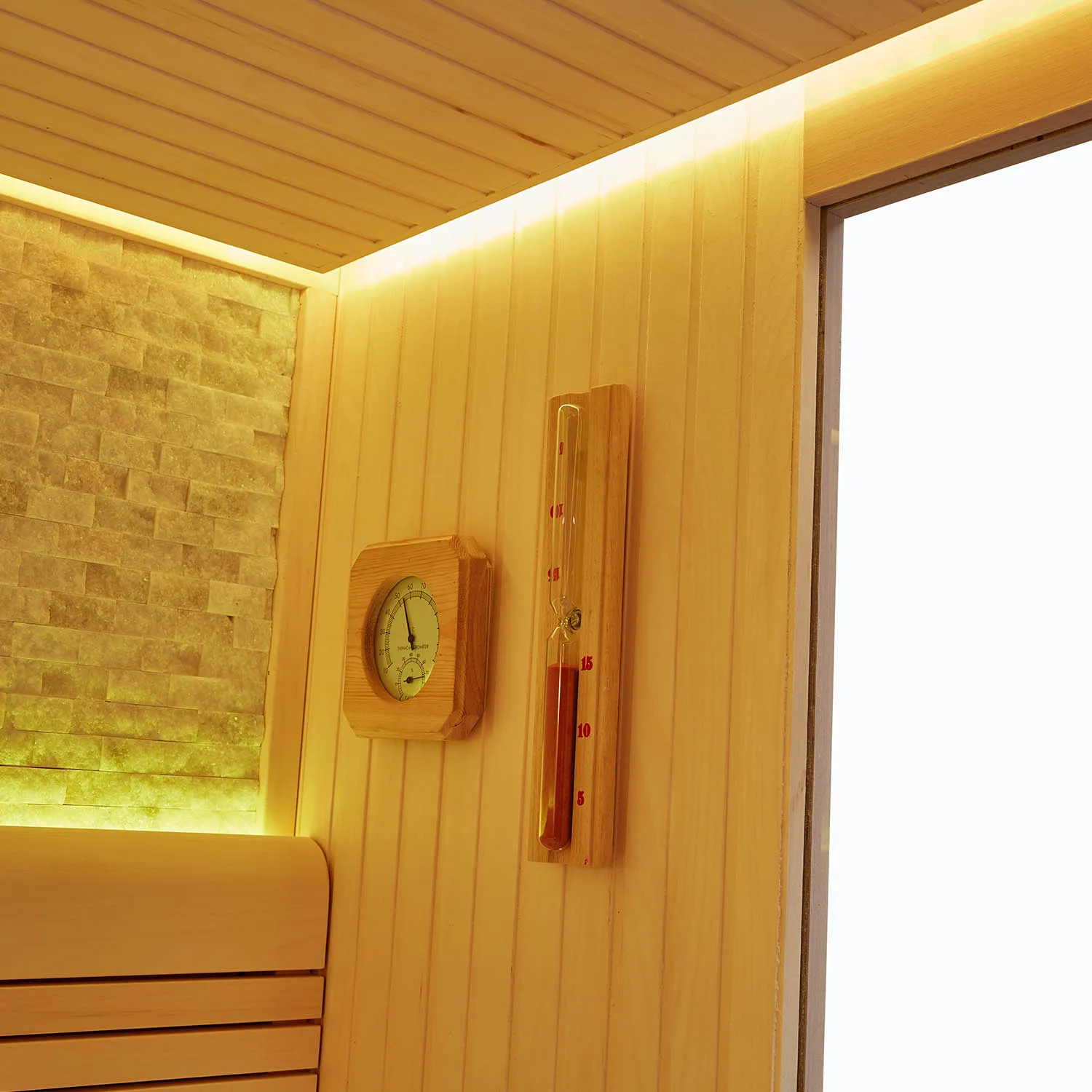
What Kind of Materials Do You Use for Outdoor Products?
Durability is key in products like outdoor spas or outdoor gazebos. MEXDA uses marine-grade acrylic, strong fiberglass reinforcement, corrosion-resistant plumbing, and weatherproof wood. For sauna rooms, we source carefully treated timber to ensure long-lasting performance.
Every massage bathtub and steam bathroom integrates high-performance pumps and heaters from trusted component brands. This material selection guarantees high-quality results at reasonable prices, making us a cost-effective supplier for global purchasing.

